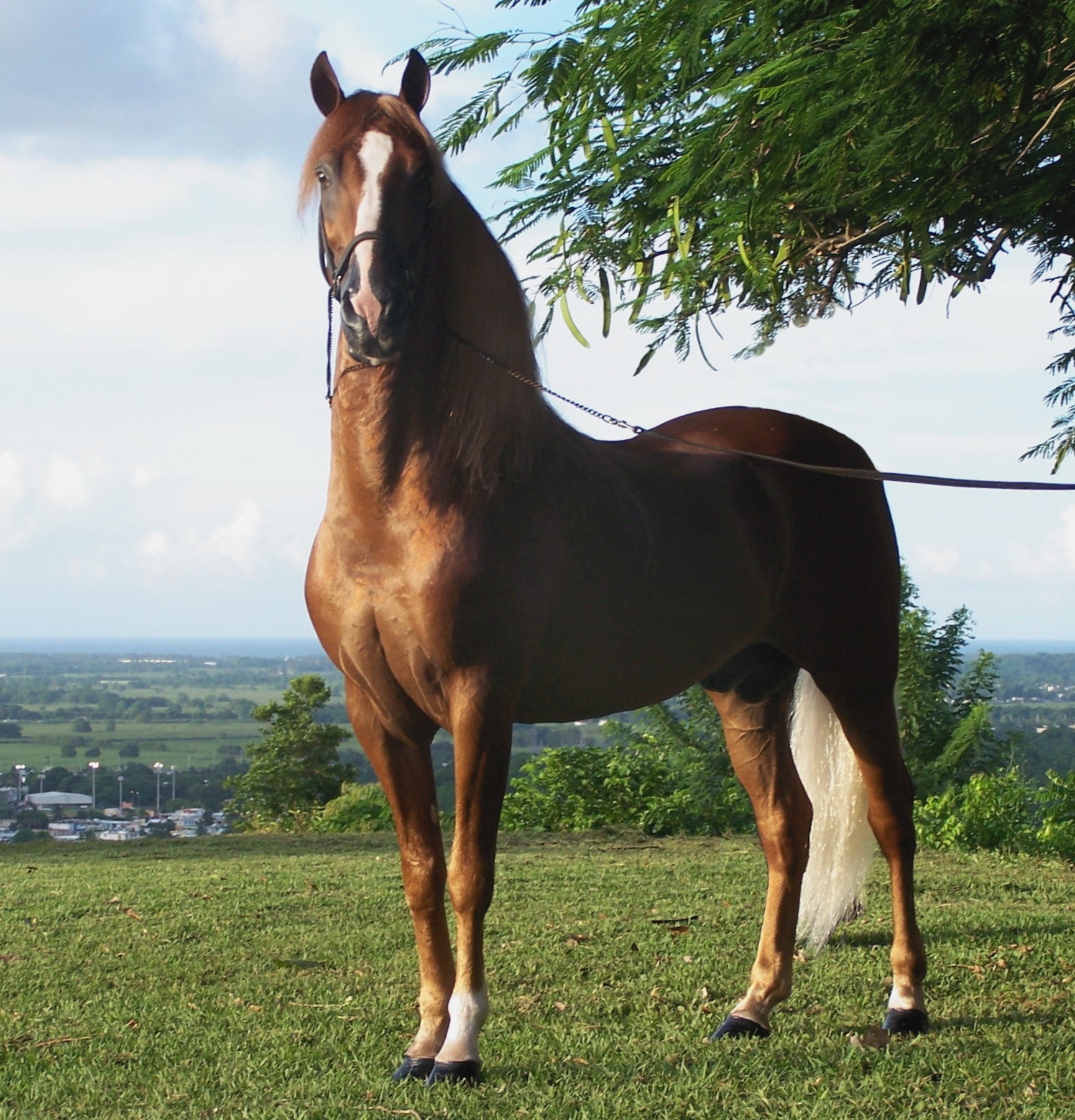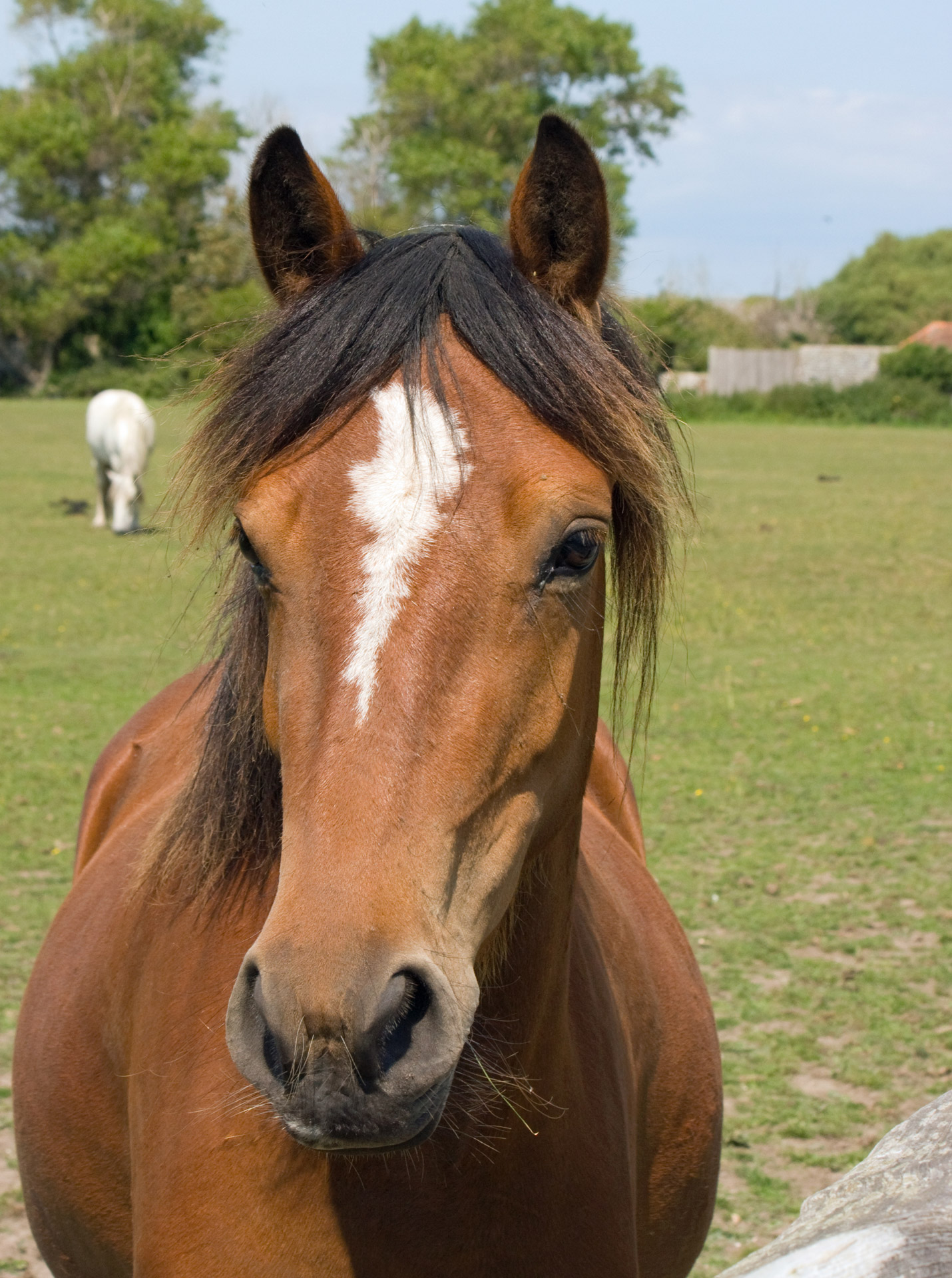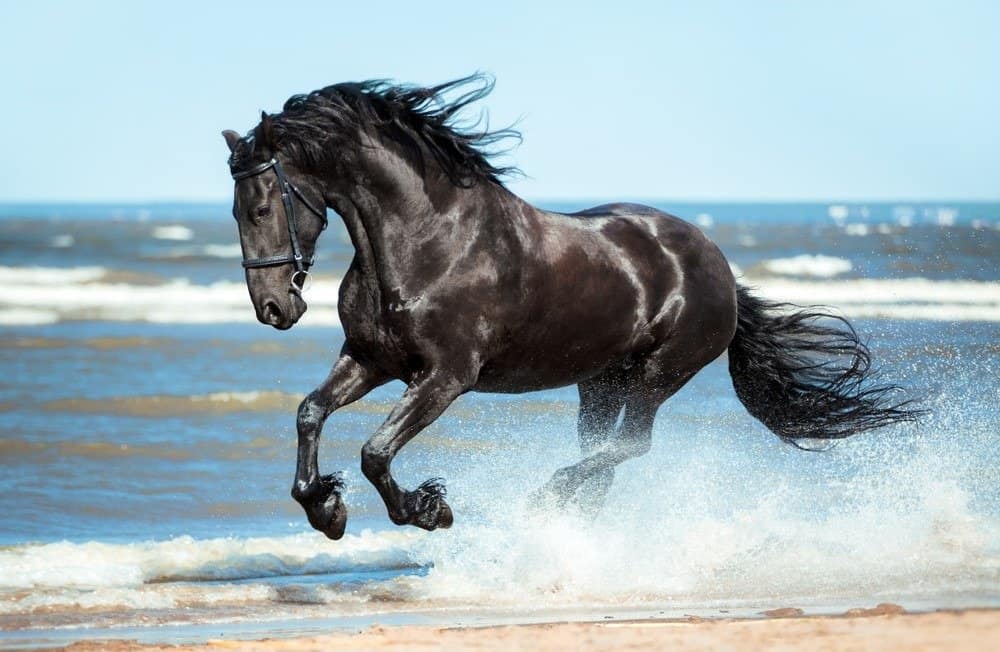Many folks who love animals, especially those with a bit of land, often wonder about keeping different creatures together. There's a lot of talk, you know, about how various farm animals might get along. One question that pops up pretty often, and it's a good one, is all about horse and pig compatibility. Can these two very different animals really share a space and even become companions? It's a topic that brings up a lot of curiosity, and for good reason, too.
You see, horses are, in a way, graceful grazers, built for wide open spaces and, quite often, they are very social with their own kind. Pigs, on the other hand, are pretty smart, very curious, and they just love to root around. They also have a very different social structure. So, bringing them together might seem a bit odd to some, a bit of a puzzle to solve, you know?
This idea of mixing species isn't new, but it does come with its own set of things to think about. We're going to look at what makes horses and pigs tick, what might work, and what definitely needs a lot of thought if you're considering having them as neighbors. It's about understanding their natures, after all, and making sure everyone stays safe and happy, which is that, a really big deal for any animal lover.
Table of Contents
- Why Consider Horse and Pig Compatibility?
- Understanding Potential Challenges
- Creating a Harmonious Environment
- Benefits of Mixed Species Living
- Real-World Experiences and Tips
- Frequently Asked Questions About Horse and Pig Compatibility
Why Consider Horse and Pig Compatibility?
It's interesting, isn't it, how people come up with these ideas about different animals living together? Maybe you have a horse, and you're thinking about adding a pig to your little farm, or perhaps you have pigs and are now considering a horse. The thought of horse and pig compatibility can spark a lot of questions. It's not just about having them in the same field, but about whether they can truly coexist without issues, which is that, a really big consideration.
Sometimes, it's about making the most of your space, or maybe you just love both animals and want to see them thrive. There's a kind of appeal to having a diverse group of animals, and some folks report positive experiences. But, you know, it's important to approach this with a clear head, understanding that every animal is an individual, and what works for one might not work for another, which is a key point to remember.
Different Needs, Shared Spaces
Horses, as you might know, are prey animals. Their instinct is to flee from anything they perceive as a threat. They are quite large, very powerful, and they need a lot of room to move around. They graze for most of the day, and their digestive systems are built for constant roughage, too.
Pigs, on the other hand, are, in a way, omnivores, and they love to root in the ground. This rooting behavior is natural for them, but it can really mess up a pasture, which is something a horse owner might not appreciate. They also enjoy wallowing in mud, which is a bit different from a horse's preference for clean, dry footing, so it's almost a contrast.
So, when you think about shared spaces, you have to consider how these very different natural behaviors will interact. A horse might get a bit spooked by a pig suddenly rooting near its feet, or a pig might accidentally get in the way of a horse that's moving quickly, which could be a problem, you know?
Behavioral Traits to Keep in Mind
Horses are herd animals, and they form social bonds within their own species. They communicate through body language, ear positions, and subtle movements. A bridled horse, for instance, is often a finished horse, paying close attention to its rider, listening better and leaning more, as some folks have noted. This kind of focus is something horses learn, and it shows their capacity for connection, that.
Pigs are also social, but their social cues are quite different. They can be very assertive, even pushy, especially around food. This assertive nature might not sit well with a horse, which tends to be more flight-oriented than confrontational. A horse might feel threatened by a pig's direct approach, which is a bit of a concern, really.
It's important to watch how each animal behaves. Some horses are naturally more laid-back, while others are a bit more sensitive. Similarly, some pigs are more mellow, while others are very boisterous. Understanding these individual personalities is, in a way, key to seeing if they might get along, so it's a matter of observation.
Understanding Potential Challenges
Even with the best intentions, bringing horses and pigs together can present some real hurdles. It's not always a smooth ride, and being prepared for these challenges is, in a way, half the battle. We're talking about their safety, their health, and even what they eat, which are all pretty big topics.
Safety First: Kicks and Bites
A horse's primary defense mechanism is to kick. A horse kicking out can cause very serious injury, even death, to a smaller animal like a pig. We've all heard stories, or perhaps even seen, how a horse can react unexpectedly. There was a story, you know, about a horse that decided to kick out at something dripping and, in a way, nailed an occupied port-a-potty on the way by. It rocked, but thankfully didn't tip, and the person inside got out fast. This just goes to show how powerful and sometimes unpredictable a horse's kick can be, which is a really important thing to keep in mind.
Pigs, while not as powerful as horses, can also bite. They have strong jaws and sharp teeth, and if they feel threatened or are competing for food, they might lash out. A pig bite could cause superficial cuts or scrapes on a horse, or even more serious wounds, which could be a problem for the horse's health, that.
So, the risk of injury is very real for both animals. It's not just about them getting along, but about preventing accidents that could have very sad outcomes. You really have to think about the size difference and the natural reactions of each species, which is, you know, a very serious consideration.
Health and Hygiene Concerns
Horses and pigs have different health needs and can carry different parasites or diseases. Pigs can carry certain worms or bacteria that might not affect them much but could be harmful to horses. Similarly, horses might carry things that pigs are susceptible to, too.
Managing manure is another big thing. Pig manure is different from horse manure, and it can attract different kinds of pests. Wallowing behavior in pigs can create muddy, unsanitary areas that are not good for a horse's hooves or skin. Horses are quite prone to conditions like thrush or other hoof problems if they are standing in wet, dirty conditions, which is something to watch out for.
Keeping a clean environment for both is, in a way, a constant chore. You'd need to be very diligent about cleaning pens and pastures to reduce the risk of cross-contamination and illness. It's like checking your horse's first aid kit; you need to know where everything is, whether it's in your medicine cabinet, under the seat in your vehicle, or even if it's still at the vet's or in the refrigerator. You just have to be on top of it, and maybe even check the garbage for old stuff, you know?
Dietary Differences
Horses are herbivores; they eat grass, hay, and specially formulated horse feeds. Their digestive systems are quite sensitive. My IR horse, for instance, only goes out full time in the fall after all the grass is dead to the roots. Now, she goes out for perhaps half an hour with a grazing muzzle while I do other chores. This shows how particular their diet can be, which is a good point.
Pigs, being omnivores, eat a much wider variety of foods. They can eat grains, vegetables, and even some meat products. Horse feed is not suitable for pigs, and pig feed is definitely not suitable for horses. If a horse eats pig feed, it could cause digestive upset, colic, or even laminitis due to the different nutrient profiles, which is a serious issue.
You would need very separate feeding areas, making sure that neither animal can get to the other's food. This means sturdy barriers and careful management during feeding times. It's a bit more work, but it's really important for their health, that.
Creating a Harmonious Environment
If you're still thinking about having horses and pigs together, despite the challenges, there are ways to make it work more smoothly. It's all about thoughtful planning and, in a way, understanding how to manage their interactions. It takes effort, but it can be done, so it's not impossible.
Smart Enclosure Design
Separate enclosures are, in a way, the safest bet, even if they share a larger pasture. This means strong fencing that can keep a horse in and a pig out, or vice versa. In our horse's shelter, for example, we have 2x6 boards with posts every ~5 feet, and there is no flexing to speak of. This kind of sturdy construction is what you need to prevent accidental encounters and ensure safety, which is very important.
You might also consider different areas for different activities. A designated rooting area for pigs, perhaps with some dirt or sand, can keep them from tearing up the horse's grazing pasture. Separate water troughs and shelters are also a must. This way, each animal has its own space to retreat to, which is a good idea, you know?
For an arena, like those used for reining or cow horse, you'd choose dimensions based on the discipline. You wouldn't want pigs wandering into an arena where a horse is working, so careful planning of space is key, that.
Gradual Introductions
If you do decide to try housing them together, a slow and careful introduction is really important. Don't just put them in the same space and hope for the best. Start with them in separate, but visible, pens so they can get used to each other's presence. This might take days, or even weeks, depending on the animals, you know?
Supervised, short periods of shared time can follow, always with an escape route for both animals. Watch their body language very closely. Any signs of stress, aggression, or fear mean you should separate them immediately. It's a bit like training a horse; it works good for training them when they have their attention more on you, and they also listen better and lean on you more, but it can also have its drawbacks if not done right. The same goes for introducing different species, so it's a slow process.
Supervision and Observation
Even after a successful introduction, ongoing supervision is, in a way, vital. You can't just leave them alone and assume everything will be fine. Regularly check on them, especially during feeding times or when new animals are introduced. Look for any changes in behavior, new cuts or scrapes, or signs of stress, which are all important clues.
Being part of a forum community dedicated to horse owners and enthusiasts can be really helpful here. People discuss breeding, grooming, reviews, health, behavior, housing, adopting, and care. You can learn a lot from others' experiences and get advice on specific situations. Sharing observations and asking questions is, you know, a great way to stay informed and address issues quickly.
Benefits of Mixed Species Living
While there are challenges, some people do find benefits to having horses and pigs together. It's not for everyone, but for those who manage it well, there can be some positive outcomes, which is good to know.
Companionship and Enrichment
For some individual animals, having a different species around can offer companionship and mental enrichment. A lonely horse might find a pig a curious and interesting neighbor, or vice versa. This is especially true if one animal is particularly social and the other is too, which is a nice thing to see.
It's not a substitute for same-species companionship, of course, but it can add variety to their day. Just like how some training methods work good for training horses, where they have their attention more on you, and they also listen better and lean on you more, a unique companion might offer a different kind of focus and interest, which is, in a way, a form of enrichment.
Natural Pest Control (for pigs)
Pigs are known for eating insects, grubs, and even small rodents. In a way, they can act as natural pest control in a pasture. This can be a small benefit, helping to reduce the population of some unwanted creatures that might bother horses. It's not a primary reason to house them together, but it is a potential side benefit, you know?
Real-World Experiences and Tips
Hearing from people who have actually tried this can give you a better idea of what to expect. There are always stories, both good and bad, when it comes to animal interactions, which is, you know, just how it goes.
Learning from Others
Many experienced horse owners and enthusiasts share their stories in forums and communities. They talk about everything from breeding to health to behavior. Some might have tried keeping pigs with horses and can share what worked for them, or what definitely did not. It's a good way to get practical advice, you know, from people who have been there.
For example, if your horse has quite a few places where he got superficial cuts or scrapes and the hair hasn't grown back, someone in a forum might know of a good product that might help the hair grow back. This kind of shared knowledge is very valuable, and it applies to managing mixed species too, that.
When Things Go Sideways
Sometimes, despite your best efforts, things just don't work out. Animals might not get along, or one might constantly stress the other. It's important to recognize when a pairing isn't working and to be ready to separate them permanently. The safety and well-being of both animals should always come first, which is that, the most important rule.
Remember that story about the horse kicking the port-a-potty? It shows that even well-behaved horses can have unexpected reactions. If a horse is consistently stressed or aggressive towards a pig, or vice versa, it's time to make a change. Forcing them to live together when they are clearly unhappy or unsafe is not fair to anyone, you know?
Keeping Them Healthy
Health is always a big topic when it comes to animals. Just like you'd make sure your horse's medicine cabinet is fully stocked, you need to be prepared for the health needs of both species. Some folks look for cheaper pentosan on offer from companies like First Choice Equine, for example, to help with their horse's joint health. This proactive approach to health is important for both horses and pigs, too.
Regular vet checks for both animals are a must. Discuss your mixed-species setup with your veterinarian, as they can offer specific advice on parasite control, vaccinations, and overall health management for animals living in close proximity. It's about being very prepared and keeping them feeling good, that.
Frequently Asked Questions About Horse and Pig Compatibility
Here are some common questions people often ask about keeping horses and pigs together:
Can a horse and a pig truly bond as companions?
While unlikely to form the same deep bonds they would with their own species, some horses and pigs can, in a way, tolerate each other's presence and even develop a kind of friendly coexistence. It really depends on the individual personalities of the animals involved, you know? Some might just ignore each other, while others might show a bit of curiosity.
What are the biggest risks of housing horses and pigs together?
The biggest risks are physical injury from a horse's kick to a pig, or a pig's bite to a horse, which is very serious. There are also health concerns due to different disease susceptibilities and hygiene needs. Dietary differences are also a big risk if they can access each other's food, so it's a lot to think about.
What kind of fencing is best for mixed horse and pig enclosures?
You need very strong, secure fencing that can contain both animals. This often means sturdy boards or heavy-gauge wire mesh that pigs can't root under and horses can't break through. Separate, well-built shelters are also a good idea, as our own horse's shelter, with its 2x6 boards and posts, shows that good construction prevents flexing, which is important for safety.
Thinking about farm animal welfare basics is always a good starting point when considering any new animal pairing. It’s about creating a safe, healthy, and happy life for all your creatures. Every animal deserves a good home and careful consideration of its needs, which is that, the main thing.



Detail Author:
- Name : Dr. Reynold Monahan V
- Username : alfonzo91
- Email : reinhold.johns@jerde.com
- Birthdate : 1975-07-10
- Address : 90028 Gertrude Mission Apt. 517 South Lottie, OH 06472
- Phone : 1-475-394-9465
- Company : Heidenreich LLC
- Job : Petroleum Pump System Operator
- Bio : Qui delectus nihil ea. Aut dolore facere deleniti ad animi et quae. Ullam perspiciatis sit sed rerum dolore id. Molestias ut dolor eius officia error.
Socials
facebook:
- url : https://facebook.com/rodger_xx
- username : rodger_xx
- bio : Voluptas numquam illo aut eaque.
- followers : 4113
- following : 463
linkedin:
- url : https://linkedin.com/in/runolfsdottir1979
- username : runolfsdottir1979
- bio : Quia rerum non itaque iste impedit odio.
- followers : 4599
- following : 2474